Statistics
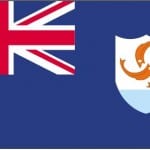
Anguilla
Brief Note about the Country
A fairly small island, about half the size of Washington, DC, Anguilla is the most northerly of the Leeward Islands in the Lesser Antilles. It is a flat and low-lying island composed of coral and limestone. Anguilla is affected by frequent hurricanes and other tropical storms during the rainy season (July-October).
Anguilla has few natural resources, and the economy depends heavily on luxury tourism, offshore banking, lobster fishing, and remittances from emigrants.
Regulation of the Insurance Industry
The Financial Services Commission (FSC), the licensing and regulatory body for the financial services industry in Anguilla, was established by the enactment of the Financial Services Commission Act on November 26th, 2003, and it commenced operations on February 2nd, 2004. The aim of the Commission is to help ensure that Anguilla is in line with international standards in the structure and administration of its financial services regulatory body.
The Insurance Act, 2006 covers the licensing and regulation of companies undertaking domestic insurance, offshore and captive insurance, and of insurance intermediaries. No person can undertake any insurance business, in or from within Anguilla, without a licence granted under the Act. It is the duty of the Commission to maintain a general review of insurance practice in Anguilla and to oversee the conduct of persons so licensed.
Anguilla is an observer of the Offshore Group of Insurance Supervisors (OGIS), and the Anguilla Financial Services Commission was inducted as a full member of the International Association of Insurance Supervisors (IAIS) in October 2007.
References
Anguilla Financial Services Commission, http://www.fsc.org.ai/insurance.shtml
Revised Statutes of Anguilla, Chapter I16 - Insurance Act, http://www.fsc.org.ai
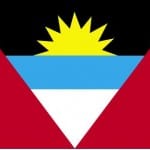
Antigua and Barbuda
Brief Note about the Country
This nation consists of two major inhabited islands, Antigua and Barbuda, and a number of smaller islands. The permanent population number approximately 87,884 (July 2011 est.), and the capital and largest port and city is St. John's, on Antigua. The climate is tropical with a terrain of mostly low-lying limestone and coral islands, with some higher volcanic areas. Antigua and Barbuda is affected by hurricanes and tropical storms (July to October), and periodic droughts. The economy is dominated by tourism, which accounts for nearly 60% of GDP and 40% of investment.
Regulation of the Insurance Industry
The Financial Services Regulatory Commission (FSRC) is a statutory body mandated to regulate and supervise International Banks and Trust Corporations, International Business Corporations, Gaming Companies, International Insurance Companies, Domestic Insurance Companies, Money Service Business, Corporate Management and Trust Service Providers and the Cooperatives Society registered in Antigua and Barbuda.
The Insurance Act, 2007, is the current legislation in effect to regulate insurance business activity, the operation of Pension Fund Plans, and all related matters in Antigua and Barbuda. The Superintendent of Insurance, appointed by the Board of Directors of the FSRC, is responsible for the general administration of this Act.
References
Financial Services Regulatory Commission, www.fsrc.gov.ag
Insurance Act, 2007, http://www.thecommonwealth.org
Official Website for the Government of Antigua and Barbuda, http://www.ab.gov.ag
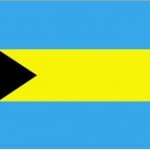
Bahamas
Brief Note about the Country
The Bahamas is a chain of islands in the North Atlantic Ocean that sit adjacent to the United States and Cuba. The climate is tropical marine, moderated by the warm waters of the Gulf Stream, and the islands terrain tends to be long, flat coral formations with some low rounded hills. Because of its position in the Caribbean, the Bahamas is quite susceptible to extensive flooding and wind damage from hurricanes and other tropical storms. With an economy that depends heavily on tourism and offshore banking, the Bahamas is one of the wealthiest countries in the Caribbean.
Regulation of the Insurance Industry
The Insurance Act 2005 came into force on July 2nd, 2009. It introduced a new system of licensing and regulation for domestic insurers based on the international standards set out by the Financial Action Task Force (FATF) and the core principles of the International Association of Insurance Supervisors (IAIS). Furthermore, because this insurance act is based on the Modern Insurance Bill (designed in 1973 by the Caribbean Law Institute), its provisions and accompanying regulations introduce a degree of harmonization with the insurance legislation of a number of other jurisdictions in the region.
The Act also provides for the establishment of an independent supervisory authority the Insurance Commission of The Bahamas. The Commission is responsible for the regulation of all insurance activity in, or through, the Bahamas. It is concerned with protecting the interests of the insuring public through the ongoing monitoring and control of insurers, agents, brokers, salesman, underwriting managers and external insurers.
References
Bahamas Financial Services Board, http://www.bfsb-bahamas.com
The Central Bank of the Bahamas, http://www.centralbankbahamas.com/
The Insurance Commission of The Bahamas, http://www.icb.gov.bs/
The Insurance Commission of the Bahamas - Insurance Act, 2005 (Bahamas), http://www.icb.gov.bs/home/insurance-law
The Insurance Commission of the Bahamas - Insurance Act, Ch.347 (2009 Consolidated Statute Laws), http://www.icb.gov.bs/home/insurance-law
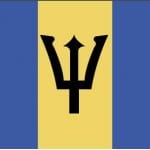
Barbados
Brief Note about the Country
Barbados is the easternmost Caribbean island. Because of its geographic location, it is infrequently affected significantly by hurricanes during its rainy season (June to October), but it is subject to periodic landslides. Barbados terrain is relatively flat, with a gentle rise to the central and northeastern highland regions.
Barbados' economy used to rely on sugarcane and cultivation related activities, however, in recent years, the economy has expanded into light industry and tourism. Currently, approximately three quarters of the GDP, and 80% of exports can be attributed to services.
Regulation of the Insurance Industry
On March 8, 2011, Barbados Parliament passed a bill approving the creation of a new regulatory entity, which would be charged with the strengthening and consolidation of the functions carried out by the Supervisor of Insurance, the credit union arm of the Cooperatives Department, and the Securities Commission. Subsequently, on Friday April 1, 2011, Barbados established a Financial Services Commission (FSC) to regulate the non-banking financial services sector, which includes all insurance business activities.
References
Barbados Parliament - Financial Services Commission Act, 2010 (Barbados), http://barbadosparliament.com
BGIS Media - A Website of the Barbados Government Information Service, http://gisbarbados.gov.bb
Central Bank of Barbados, http://www.centralbank.org.bb/
Tax News: Global Tax News, http://www.tax-news.com
Barbados Insurance Act: http://www.prerogativechambers.com

Belize
Brief Note about the
Belize is located in Central America, bordering the Caribbean Sea, between Guatemala and Mexico. The climate is very hot and humid, with a rainy season (May to November), and a dry season (February to May). Its terrain is mainly flat, with low mountains to the south and a swampy coastal plain. Belize is susceptible to frequent, devastating hurricanes (June to November), and coastal flooding (especially in the south) throughout its rainy season.
Tourism is the largest foreign exchange earner in its economy, followed by exports of marine products, citrus, cane sugar, bananas, and garments.
Regulation of the Insurance Industry
The Supervisor of Insurance Office has been established, within the Ministry of Finance, to oversee: the administration of the Insurance Act No.11 of 2004; all insurance regulations; the collection of statistical data; and advising Government on insurance matters.
References
Central Bank of Belize, https://www.centralbank.org.bz/
Government of Belize Ministry of Finance: Supervisor of Insurance Office, http://www.mof.gov.bz
Insurance Act, No.11 of 2004, http://www.mof.gov.bz/dms20uc
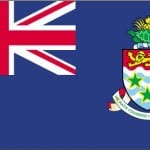
Cayman Islands
Brief Note about the Country
The Cayman Islands is a group of three islands (Grand Cayman, Cayman Brac, and Little Cayman) situated in the Caribbean Sea, south of Cuba, and northwest of Jamaica. Its climate is tropical marine and consists of warm, rainy summers (May to October), and cool, relatively dry winters (November to April). The islands are comprised of low-lying limestone base surrounded by coral reefs, and they're affected by hurricanes from July to November.
The Cayman Islands is a thriving offshore financial centre, as there is no direct taxation. As of 2008, more than 90,000 companies were registered in the Cayman Islands. Along with the offshore financial industry, tourism is a significant economic contribution, accounting for approximately 70% of GDP and 75% of foreign currency earnings.
Regulation of the Insurance Industry
Cayman Islands Monetary Authority (CIMA) is the primary financial services regulator of the Cayman Islands. The Insurance Law (2008 Revision) names the CIMA as the body responsible for regulating the insurance industry in the Cayman Islands. Its responsibilities include: licensing, ongoing supervision, and enforcement.
CIMA's Insurance Supervision Division handles the day-to-day regulatory oversight of the insurance sector. Therefore, it would directly oversee all insurance related licensees and registrants.
References
Cayman Islands Monetary Authority, http://www.cimoney.com.ky
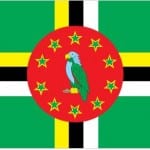
Dominica
Brief Note about the Country
Dominica is an island of volcanic origin with rugged, mountainous terrain. Its climate is tropical, with heavy rainfall that is moderated by northeast trade winds. Flash floods are a constant threat, and hurricanes are to be expected in the late summer months.
Dominica's economy has been mostly reliant on agriculture, primarily bananas in years past. Progressively more, the economy has been driven by tourism. The Government is seeking to promote Dominica as an ecotourism destination.
Regulation of the Insurance Industry
Dominica's Insurance Industry is regulated by the Financial Services Unit, which is a division of the Ministry of Finance and Planning.
References
Government of the Commonwealth of Dominica's Ministry of Finance, http://www.dominica.gov.dm

Guyana
Brief Notes about the Country
Located in northern South America, Guyana borders the North Atlantic Ocean, and sits beside Venezuela, Brazil, and Suriname. The climate is hot and humid, with two rainy seasons (May to August, and November to January). Flash floods are common during the rainy seasons.
The Guyanese economy is based mainly on agriculture and extractive industries (oil, gas, and mining), and it has shown indications of moderate economic growth in recent years. The following six commodities - sugar, gold, bauxite, shrimp, timber, and rice - represent nearly 60% of the country's GDP, and are extremely vulnerable to adverse weather conditions and fluctuations in commodity prices. Guyana's entry into the Caricom Single Market and Economy (CSME), in January 2006, has created more options in the country's export market; especially in the raw materials sector.
Regulation of the Insurance Industry
The Office of the Commissioner of Insurance (OCI) was constitutionally mandated under the Insurance Act of 1998. It was officially established on December 18th, 2002. The Commissioner of the OCI is appointed by the Minister of Finance and reports directly to him/her. The OCI's operations are funded by government and industry contributions.
The goal of OCI is to regulate and supervise Guyana's Insurance Industry. It is also responsible for the administration of the Insurance Act, the promotion of competition in the Insurance industry, the protection of consumers and the regulation of all Pension Plans.
References
Bank of Guyana, https://www.centralbank.org.bz/
Insurance Act, 1998, http://www.insurance.gov.gy/Documents
Insurance Regulations, http://www.insurance.gov.gy/regulations.html
Office of the Commissioner of Insurance Cooperative Republic of Guyana, http://www.insurance.gov.gy/index.html
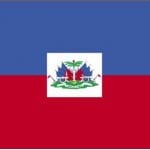
Haiti
Brief Note about the Country
Haiti occupies the western one-third of the island of Hispaniola; the Dominican Republic occupies the remainder. Its terrain is mostly rugged and mountainous, and the climate is tropical, yet semi-arid in the East where mountains cut off the trade winds. Haiti is subject to severe storms from June to October (which can result in occasional flooding), as it lies in the middle of the hurricane belt. It can also be affected by occasional earthquakes and periodic droughts.
A massive earthquake (of magnitude 7.0) struck Haiti in January 2010. The epicenter was about 15 km southwest of the capital, Port-au-Prince. It is estimated that 2 million people lived within the zone that experienced the most significant structural damage. The earthquake was determined to be the worst in this region over the last 200 years, and a considerable amount of international assistance has been required to help the country recover.
Haiti is a free market economy. To its advantage, labour costs are low and it enjoys a tariff-free agreement with the United States for many of its exports. Poverty, corruption, and extremely limited access to education, for the majority of the population, are among some of Haiti's most serious disadvantages. The economy suffered a severe setback last year when the earthquake destroyed much of Port-au-Prince and its neighbouring areas. Already the poorest country in the Western Hemisphere, with approximately 80% of the population living under the poverty line and approximately 54% living in abject poverty, the damage to Port-au-Prince caused Haiti's GDP to be reduced by an estimated 5.1% in 2010.
Regulation of the Insurance Industry
La Banque de la ®publique d Hati/Bank of the Republic of Haiti (BRH) is the central bank of Haiti. Among other financial duties, it is responsible for the supervision and regulation of Haiti's Credit Unions and Co-operatives, and Foreign Exchange businesses, through la Direction d'Inspection Generale des Caisses Populaires/Directorate of Supervision of Credit Unions (DIGCP), and Surveillance des Activites de Transfert de Change/Supervisor of Foreign Exchange (SATCH), respectively. However, there are no legislated, or formal regulations in place, at this time, for the Insurance Industry.
References
Banque de la Republique d'Hati (Bank of the Republic of Haiti), http://www.brh.net/
Gary, Cyprien L. Hati: Les Assureurs Chancellent mais Tiennent Bon/Haiti: The Insurance Industry is Shaky, but the Insurers are Holding Firm. Le Nouvelliste, 08 April 2011. Web. 31 October 2011
http://www.lenouvelliste.com
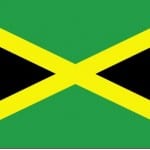
Jamaica
Brief Note about the Country
Located just south of Cuba, in the Caribbean Sea, Jamaica is mostly mountainous with a narrow, discontinuous coastal plain. The climate is hot and humid with a temperate interior, and hurricanes are a natural hazard (especially between July and November).
Jamaica's economy depends heavily on services, which account for more than 60% of its GDP. However, the country continues to derive most of its foreign exchange from tourism, remittances, and bauxite/alumina. While remittances make up approximately 15% of the GDP, exports of bauxite and alumina account for about 10%. Although the bauxite/alumina sector has been affected by the global downturn, the tourism industry has been quite resilient. It has experienced an increase of approximately 4% in tourist arrivals, and accounts for roughly 10% of Jamaica's GDP. Both arrivals and revenues grew in 2010, increasing 4% and 6%, respectively.
Regulation of the Insurance Industry
Created under direction of the Insurance Act, 2001 and Insurance Regulations, 2001, the Financial Services Commission (FSC) is charged with the responsibility of supervising and regulating the securities, insurance, and private pensions industries. In essence, it is an integrated financial services regulator with the responsibility of ensuring proper administration of the relevant industry laws. The Insurance Division of the FSC oversees the regulation and supervision of the Insurance Industry.
References
Bank of Jamaica, http://www.boj.org.jm/
Financial Services Commission, http://www.fscjamaica.org/
Insurance Regulations, 2001, http://www.moj.gov.jm/laws/subsidiary/SCHEDULE%2014.pdf
The Insurance Act, 2001, http://www.moj.gov.jm/laws/statutes/The%20Insurance%20Act.pdf
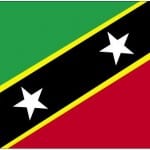
Saint Kitts and Nevis
Brief Note about the Country
Saint Kitts and Nevis is a twin island nation. Its terrain is volcanic with mountainous interiors. The rainy season starts in May and ends in November. During that time, Saint Kitts and Nevis are subject to hurricanes, but otherwise, there is little seasonal temperature variation.
The economy is heavily dependent on tourism. It has replaced sugar, which was the economy's traditional mainstay until the 1970's. Not unlike other tourist driven economies in the Caribbean, Saint Kitts and Nevis are vulnerable to shifts in tourism demand due to damage from natural disasters, and economic conditions overseas. Therefore, the government has been trying to broaden the agricultural sector, and stimulate other sectors of its economy.
Regulation of the Insurance Industry
The Financial Services Regulatory Commission (FSRC) was established under the Financial Services Regulatory Commission Act, No. 22 of 2009, to regulate the non-banking financial sector. It is responsible for supervising and regulating: Insurance Companies (Domestic and Captive); Private Pension Plans; Money Services Businesses; Credit Unions; and Trust and Corporate Service Providers.
References
Captive Insurance Act, http://www.fsc.gov.kn/?q=insurancebusinesses
Domestic Insurance Act, http://www.fsc.gov.kn/?q=insurancebusinesses
Financial Services Regulatory Commission Saint Kitts and Nevis, http://www.fsc.gov.kn/
Financial Services Regulatory Commission Act, No.22 of 2009, http://www.nevisfinance.com
Insurance Act, No.8 of 2009, http://www.nevisfinance.com/PDFS/Insurance%20Act%202009.pdf

St. Lucia
Brief Note about the Country
Saint Lucia lies between the Caribbean Sea and the North Atlantic Ocean, just north of Trinidad and Tobago. The climate is tropical, moderated by northeast trade winds, with a dry season from January to April, and a rainy season from May to August. Saint Lucia's terrain is volcanic and mountainous, with some broad, fertile valleys. Its twin Pitons (Gros Piton and Petit Piton), cone-shaped peaks south of Soufriere, are one of the many natural, scenic highlights of the Caribbean region.
In recent years, Saint Lucia has been able to attract foreign businesses and investments, particularly in the tourism and offshore banking industries. Banana, mango, and avocado crops are still cultivated for export, but tourism provides the country's main source of income. It is also the country's biggest employer, and primary source of foreign exchange.
The manufacturing sector is the most diverse in the Eastern Caribbean region, and the government is trying to revitalize the banana industry.
Regulation of the Insurance Industry
The Financial Sector Supervision Unit (FSSU) has the responsibility of regulating both the domestic (onshore) sector and the international (offshore) sector. Therefore, the FSSU handles the licensing, registration, supervisory and regulatory functions of the sector. These functions entail the administration of the Insurance Act and the International Financial Services Legislation, and effectively supervising and regulating all entities licensed to operate in the sector. Some of the entities regulated by the FSSU include: Domestic Insurance Companies; Domestic Insurance Intermediaries; International Banks; International Insurance Companies; International Public Mutual Funds; and Registered Agents and Registered Trustees, among others.
The objectives of the FSSU are: to maintain the integrity of the financial sector through the efficient and effective administration of the financial services laws and regulations; to encourage the application of best international practices and standards; and to provide effective supervision and regulation of licensees operating in the sector.
References
International Insurance Act, Chapter 12.15, http://www.saintluciaifc.com/pdf/legislation/insurance_act.pdf
Ministry of Finance, Economic Affairs and National Development,http://www.finance.gov.lc/
Ministry of Finance, Economic Affairs and National Development: Financial sector Supervision Unit, http://www.finance.gov.lc/departments/view/62#resources

St. Vincent and the Grenadines
Brief Note about the Country
Saint Vincent and the Grenadines is comprised of 32 islands and cays situated between the Caribbean Sea and the North Atlantic Ocean, north of Trinidad and Tobago. The terrain is volcanic and mountainous. There is a rainy season from May to November, but very little seasonal temperature change otherwise. Hurricanes are a threat throughout the rainy season, and Soufriere volcano, on the island of Saint Vincent, is a constant threat.
The success of Saint Vincent's economy depends on the seasonal changes in tourism, agriculture, and construction. It also includes a small offshore banking sector.
Regulation of the Insurance Industry
The domestic insurance authority for Saint Vincent and the Grenadines is the Supervisory and Regulatory Division of the Ministry of Finance.
The International Financial Services Authority (IFSA) administers and oversees the licensing, regulation, and supervision of International Banks, Mutual Funds, International Insurances, Trusts, and International Business Companies. Its regulations are set out by the International Insurance Act, 1999.
References
International Financial Services Authority of Saint Vincent and the Grenadines, http://www.svgifsa.com/index.htm
International Insurance Regulations, 1999, http://www.svgifsa.com/pdf/INTERNATIONAL%20INSURANCE%20REGULATIONS.pdf
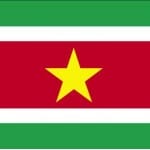
Suriname
Brief Note about the Country
Suriname is situated in northern South America, next to French Guiana (to the East), Brazil (to the South), and Guyana (to the West), and borders the North Atlantic Ocean. Made up of mostly tropical rain forests, rolling hills, and a narrow coastal plain with swamps, Suriname's climate is tropical, and moderated by trade winds. It is South America's smallest independent country. The population is also relatively small (approximately 492,000 inhabitants in July 2011) and lives mostly along the coast.
The economy is dominated by the mining industry. The main exports are alumina, gold, and oil, which account for approximately 85% of exports and 25% of the government's revenues. That being the case, the economy is extremely vulnerable to mineral price fluctuations.
Regulation of the Insurance Industry
The Central Bank of Suriname (CBS)/Centrale Bank van Suriname (CBvS) is the highest monetary authority and the country's governing body in monetary and economic affairs. Divided into three directorates to accomplish its assigned tasks, legislated in the Bank Act of 1956, the Directorate of Supervision is the main regulator of the Insurance Industry. Its main duties are: supervising credit banks and unions, in which are also included insurance companies and pension funds.
References
Centrale Bank van Suriname, www.cbvs.sr
Supervision Profile Centrale Bank van Surname, http://www.cgbsnet.org/docs/profiles/profile_suriname.pdf
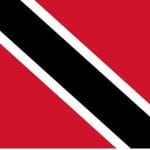
Trinidad and Tobago
Brief Note about the Country
One of the more populated nations, and the southernmost in the Caribbean, Trinidad and Tobago is a twin island country that straddles the Caribbean Sea and the North Atlantic Ocean. It sits just northeast of Venezuela. Trinidad consists of mostly plains with some hills and low mountains. There is a rainy season (June to December), but because of its location, it lies outside the usual path of hurricanes and tropical storms. Pitch Lake, on the southwestern coast of Trinidad, is the largest natural reservoir of asphalt in the world.
Trinidad and Tobago has one of the highest growth rates and per capita incomes in all of Latin America. Thus, it has earned a reputation as an excellent investment site for international businesses. Its economy is heavily dependent on its natural resources, namely, oil and gas (they are the leading producer of those resources in the Caribbean), but it also supplies a variety of manufactured goods, such as food products and beverages, as well as cement, to the Caribbean region. Oil and gas account for approximately 40% of the GDP and 80% of all exports, but only 5% of employment. The country is also a regional financial centre, and tourism is a growing sector, although it is not as important domestically as it is to many other Caribbean islands.
Regulation of the Insurance Industry
The Central Bank of Trinidad and Tobago is responsible for supervising and regulating the Insurance Industry and all of its activities. This responsibility is legislated under the Insurance (Amendment) Act, 2004. The Minister of Finance may designate a person employed in his/her Ministry to be the Supervisor of Insurance. The Supervisor is then charged with the administration of the Insurance Act.
In 2007, the Central Bank embarked on an initiative to enhance the regulation of the insurance industry through the development of more rigorous, prudential criteria. Working groups comprised of representatives from all sectors of the industry were established to: introduce a risk-based capital framework; develop Financial Condition Report (FCR) regulations for both long term and general insurance companies; and determine a common actuarial valuation methodology, with the aim to introduce, across the industry, a prospective basis for determining the actuarial reserve to be referred to as the Caribbean Policy Premium Methodology (CPPM).
References
Central Bank of Trinidad and Tobago Insurance Sector, http://www.central-bank.org.tt/content/insurance-sector
Insurance (Amendment) Act, No.15 of 2004, http://www.ttparliament.org/legislations/a2004-15.pdf
